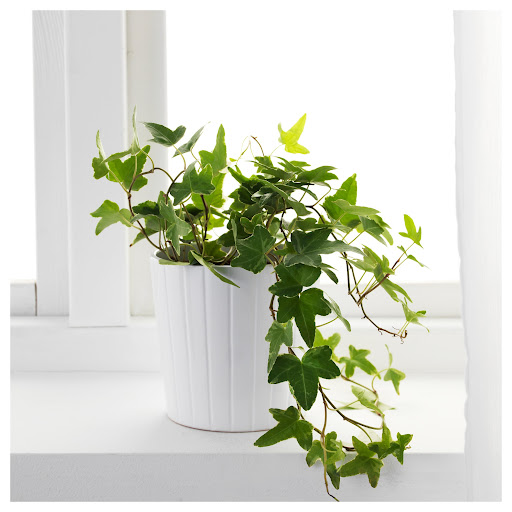Light
English ivy plants grow well in part shade to full shade. The ability to grow in shade has made English ivy a traditional ground cover for planting under trees, where most grasses may not grow well. Vigorous, with a dense growth habit, this ground cover can be effective where the object is to crowd out weeds.Ivy grown indoors needs bright, indirect light in summer but can benefit from some direct light in winter.
Soil
Grow this evergreen vine in well-drained soil. Although it will grow in poor soils and soils of a wide range of pH levels, it does best in average loams. A thick layer of mulch helps keep the soil moist in dry climates.Indoors, ivy does best in potting mix that is loose and well-drained.
Water
When watering your ivy, always check the soil before adding water. Ivies prefer to be kept slightly on the dry side, so let the soil dry out some (dry to the touch on top) before you water your ivy plants again. Also, make sure that your plant has excellent drainage. Ivy should not be kept in standing water or overly wet soil.
Temperature and Humidity
English Ivy plants can grow in temperatures between 45 and 80 degrees Fahrenheit. Their leaves will stay dark green when grown in consistent temperatures and medium to high humidity. It does not like cold winter wind or high summer heat.
Try to keep indoor plants cool at night, below 60 F if possible. In some areas and with some species of ivy, it’s possible to keep potted plants outdoors in winter, and new growth emerges from the stems in spring.
Fertilizer
Feed English ivy every two weeks during the spring and summer season, using a 20-20-20 fertilizer (or a 2-2-2 organic formula). Do not use fertilizer or plant food if the plant is in a stressful situation: very hot, very cold, or very dry soil, or when leaf production has stopped.
for more information : English Ivy Plant
Pruning
Trim ground cover plants in the spring to keep it manageable and discourage bacterial leaf spot. Prune any ivy into a bushy shape by pinching off its growing tips, also in spring. A hard pruning every few years helps revitalize the plant.
If English ivy is already climbing one of your trees and you wish to remove it, be careful. Do not just rip a vine off, which could hurt the tree’s bark. Instead, cut each vine where you find it coming out of the soil at the base of the tree, where it begins its ascent. When cut off from the earth (and thus from a water source), the part of the vine left anchored in the tree bark will eventually wither and die.
This removal technique is the best way to get rid of the plant organically, but it does require some patience. You will need to go back year after year and cut new growth until all strength has been sapped out of the plant. It is only at this point that new shoots will stop emerging every spring.
Propagating
The same trimmings or stem cuttings that you take from pruning your ivy can be used to propagate new plants. Use healthy stems that are 4 to 5 inches long. Submerge the cut ends in water and wait for roots to develop, then transfer the stems to a pot or the ground. Plants grown as ground cover naturally spread when stems contact the soil and take root; you can cut rooted stems and dig them up to move them to a pot or a different garden location.
Potting and Repotting
Some gardeners grow these plants in hanging baskets, letting them cascade over the sides. Indeed, considering their invasive quality, this is a very sensible way to grow the vines for their beauty without having to worry that they will spread out of control.
Small ivy plants can be repotted once a year; larger plants can be repotted every two years. Always repot with new potting soil to ensure adequate nutrition. Older plants that can use a boost often can be revived by simply replacing the soil in the same container.
Please Note
This product will be hand delivered to your doorstep.
The image is for reference only.
Please take out the plant from the box immediately after receiving and water it as required.
Water the soil, not the leaves and flowers.
Keep it away from direct sunlight.
Avoid placing plants in trouble spots, such as near heat or air conditioning ducts.
From enisarg.com






There are no reviews yet.